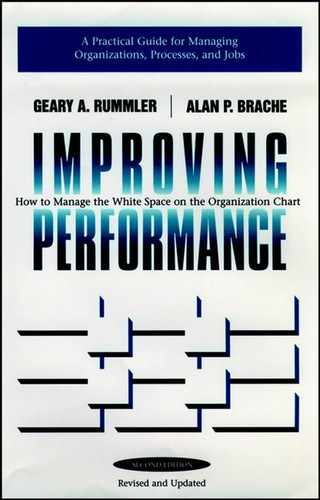11.6. Sin 6: The organization focuses more on redesign than on implementation.
Process redesign is all academic until implementation. The investment in creating the changes pales in comparison with the calendar time, the management time, and the resources required for successful implementation of those changes.
Top management has been defined as a group of people who suffer from attention span deficit disorder. When overseeing the implementation of Process Improvements, this disease needs to be in remission. You and the other members of your top management team must remain focused during the time it takes to install the redesign. For a complex process, implementation often lasts nine to eighteen months.
If you visit the executive suite of a telecommunications company we know, you will see a 3-by-6-foot cardboard poster. It's a bank check in the amount of $1.3 billion made out to the company. In the memo section, it states, "Process reengineering restructuring charges." It's signed, "The Shareholders." That check helps to keep those executives focused and committed to the changes.
Implementation requires equipping the organization to absorb the change; appointing an implementation leader, establishing detailed action plans, defining roles and rewards for a group that often has six to ten times more people than were involved in the design process, and managing an effort that can be as large as launching a new product or entering a new market.
Implementation usually includes changes to policies, forms, computer systems, job descriptions, and rewards.
The bottom line is, if you're not prepared to scramble some eggs, don't ask people to design an omelet. The implementation (Phase 3) process described in Chapter Ten is designed to ensure that this sin doesn't plague us.
Sin 7: Teams fail to leave behind a measurement system and other parts of the infrastructure necessary for continuous Process Improvement. If an organization doesn't move from Process Improvement (projects) to Process Management (continuous improvement), it has engaged in some needed problem solving but has not realized the potential return on its investment.
We cannot lay the blame for this sin at the feet of the worker-level Design Teams. If they have not created vehicles for the continuous improvement of the redesigned process, it's probably because the effort's sponsors didn't communicate that expectation.
Process Management must rest on a foundation of measures. These ensure that department goals serve the greater good of cross-functional process effectiveness; that they reflect both customer and financial needs, bothat the end of the process and upstream; and that they represent the "critical few" meters of process health that should be on the management instrument panel. If your Design Teams create a new process but do not develop a set of measures to go with it, they haven't done the full job.
Once measures have been established, management must monitor performance against them and use this information as the basis for decision making, problem identification, feedback, and rewards. Installing a process-based measurement system isn't easy. However, there's no more potent tool for continuous improvement. And an effective set of process measures provides the link between your overall organization measures (such as return on earnings and market share) and the measures of individuals and teams.
In addition to measures, Process Management usually requires each key process to have a senior-level "owner." The Dow top team has identified the company's eight most critical companywide processes and designated a "global champion" for each. These executives are expected to monitor, report on, and troubleshoot process performance; to coordinate Process Improvement efforts; and to share "best practices" across product lines and geographic areas.
Process Management can also be buttressed by forming permanent Process Improvement Teams, conducting formal process reviews, planning/budgeting by process, and, in some cases, organizing by process.
The question is, how are we going to ensure that we don't lose our focus on this process that we've just (re)designed? A local telephone company answered this question in a powerful way. It was proud of the gains it had made in six or seven years of Process Improvement Projects, but was concerned that it wasn't yet "man aging by process" on a daily basis. The top management team concluded that the strongest signal it sent was the way it measured and paid people. That company now pays bonuses to all employees—from top management to unionized firing-line workers—based on the performance of the processes in which they work. They've installed a rock-solid basis for continuous Process Improvement.
If you're not prepared to continuously manage processes, don't be surprised if you're asked to continuously fund large-scale ad hoc Process Improvement Projects. (To avoid Sin 7, we recommend establishing the measurement system described in Chapter Twelve and the Process Management infrastructure presented in Chapter Thirteen.)
In most companies, the chief executive no longer asks, "What is Process Improvement?" or "Why should I improve my processes?" Today, he or she asks, "How can I increase the return on my Process Improvement investment?" We believe a large part of the answer is, "By avoiding these deadly sins."
